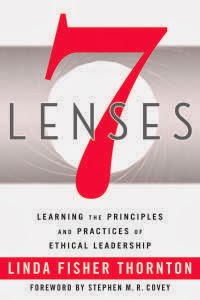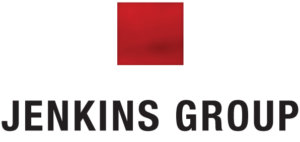What does it take to successfully be positioned as a “thought leader”? Business minds across every industry understand the authority that this elusive title can add to a name; thought leaders are in high demand for speaking engagements, workshops, appearances, etc. Yet attaining the title is no easy feat, and many hopeful men and women are destined to forever remain indistinguishable from the mass of wannabe thought leaders. So what separates the successful from the pack?
 Take Linda Fisher Thornton. Linda was named to the Top 100 Thought Leaders in Trustworthy Business Behavior list by Trust Across America. As I spoke with Linda about her company, Leading in Context, and her recently released book, 7 Lenses: Learning the Principles and Practices of Ethical Leadership, I realized that Linda possessed the two things a thought leader must have.
Take Linda Fisher Thornton. Linda was named to the Top 100 Thought Leaders in Trustworthy Business Behavior list by Trust Across America. As I spoke with Linda about her company, Leading in Context, and her recently released book, 7 Lenses: Learning the Principles and Practices of Ethical Leadership, I realized that Linda possessed the two things a thought leader must have.
Let us begin with the more obvious of the two: Linda has developed a clear message about business ethics, a message that answers a specific need in the business community while remaining applicable on a general level. “I had been developing leaders for over 25 years and teaching leadership for 12 years, and I had a strong sense that our current definitions of leadership did not fully incorporate responsibility,” she says. Exploring this void, Linda attended an ethics symposium at the University of Richmond, where experts from different fields made compelling cases as to what the “greater good” meant to them. “I wanted to find a way to pull all of these perspectives together. I was fascinated with the idea that how we look at things changes how we act on them,” she says. “After doing quite a bit of research and not finding a framework that pulled together leadership and responsibility in a holistic way, I decided to write 7 Lenses because we desperately needed a clear framework for leading ethically in a complex world. I used the lens metaphor to describe seven different ways to look at ethical leadership. Looking at it through all seven of the lenses gives us a kaleidoscopic view that represents the whole.”
As she developed her message to answer this apparent void in leadership, Linda began posting about what she was discovering on her blog, which explores how to unleash the positive power of ethical leadership. People began responding; it was at this time that Trust Across America named her a thought leader, and 800ceoread published her manifesto titled “What Ethical Leaders Believe.” The blog attracted followers from 160 different countries, affirming what Linda already suspected: her work was desperately needed.
With a relevant message identified, Linda moved on to the second necessity of thought leadership: the ability to share this message in a clear, effective manner—so Linda produced a book. Why a book? After all, blogging is a respected forum for the communication of ideas, and it is certainly cheaper. Linda chose to produce a book to advance the field of ethical leadership. She also understood what other thought leaders have come to realize: a book builds a strong, solid foundation on which to grow and communicate a message. She committed the time and resources needed to write this book, and in the process built a platform for her consulting work and the foundation of related services for developing leaders. With 7 Lenses available to relay her message in an authoritative way, Linda has the two most important things to set her apart as a thought leader—a clear message and the ability to share it effectively.
Unfortunately, in today’s world, possessing the first is no longer enough—no matter how powerful and significant that message might be. Professionals are faced with an overwhelming mass of content in every direction they look. By producing a book, Linda has distinguished her incredibly important message from this mass, and set herself apart as a thought leader.
Linda’s book, 7 Lenses: Learning the Principles and Practices of Ethical Leadership, is available on Amazon and for Nook at Barnes and Noble.




